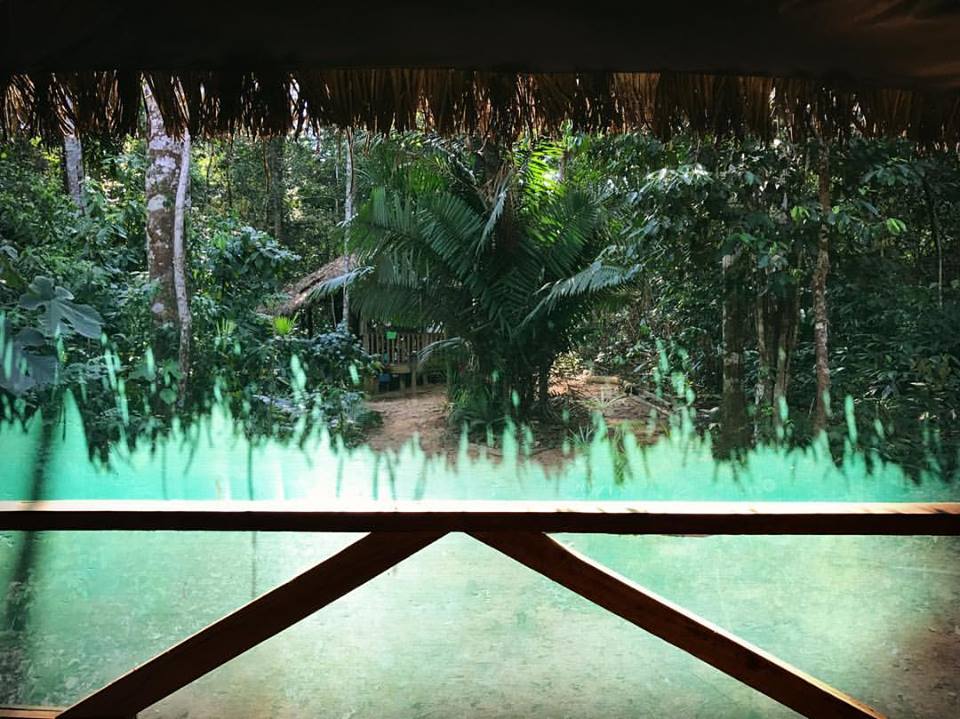Novalis is an investigative platform for science, art, and ecology. Based in the SE Peruvian Amazon, our goal is to continue preservation initiatives on 2,000 hectares of primary rainforest, and provide a home-base for rainforest experiences, community-building, and research relating to conservation, preservation, art & design, and indigenous knowledge.
We welcome private groups, individuals, and universities to explore this biodiversity and furthermore to share knowledge; our greatest resource for change.
So, where are we and where have we been?
Novalis is located on 600 hectares of Brazil Nut Concession in the district Bajo Piedras of Madre de Dios region, close to the triple border of Peru, Brazil and Bolivia. We originally began as a retreat center for cultural and environmental conservation called Canto Luz, and have grown into Novalis. Many of our actions past and present are with the same associates of people. New and old collaborators are joining us all the time.
We give thanks to several important people who have become part of our life, and are part of our history, as we are part of theirs. It is impossible not to mention original collaborators including Mariya Garnet, Sara Valhalla Astra, and Juan Zuniga and all the supporters who helped build through a funding campaign. We are especially grateful Vivre Perché who were the major force in construction of our tree houses. We wish well to all the first visitors and all the first animals who came to visit Canto Luz in the opening days. We are grateful to all our workers who have tirelessly helped us make sure our constructions stayed up, and that pepole were fed, and safe. Thank you to all the volunteers and participants, as well as our neighbours. We also offer our heartfilled gratitude to Jennifer Joy Logan, who will always guide us.
Surrounded by primary and secondary tropical rainforest in what is considered to be the bio-diversity capital of the world, Novalis is a habitat to many animal species such as: Jaguar, Tapir, White lipped peccary, black spider monkey and many others.
Madre de Dios is home to some of the last substantial populations of big-leaf mahogany, one of the most valuable hardwood timbers in the international market, and the Brazil Nut tree, also a hardwood specie.
The region is also an ancestral homeland to several indigenous communities. The rainforest accessible from the Las Piedras River, where Novalis is located, is largely unpopulated.The small native communities are located on the riverside, and the river affords them their main means of transport.
The region of Madre de Dios is home to 11 indigenous peoples, 9 of which are aboriginal and 2 of which—the Quichwa and the Shipibo-conibo—hail from other regions of the Amazon. The original peoples of Madre de Dios include the Matsigenka, Ese Eja, Harkmbut, Yine, Amahuaca, Yaminahua/Yora peoples and the voluntarily isolated Mashco Piro, as well as two other unidentified voluntarily isolated peoples.
Novalis is located in close proximity to three communities: Puerto Arturo, mainly of Quichwa origin, Santa Teresita of Yini etnic group and Boca Pariamanu, Amahuaca. We have been closely working with these communities, conducting research while listening to their needs and responding by supporting the cultural preservation of these communities by developing a rescue plan and implementation of native language in Amahuaca community of Boca Pariamanu and developing the first grammar of the Quichwa dialect of Quechua language of Puerto Arturo community.
The Amazon rainforest is responsible for rainfall on an intercontinental scale, providing a host of ecosystem services, including protection of watersheds from erosion and evaporation, nutrient cycling and providing habitat for species critical for pollination of food crops. A single rainforest reserve in Peru is home to more species of birds than are found in the entire United States.
Novalis, as a Brazil Nut consession, is responsible for safeguarding over 200 Brazil Nut trees, which can only reproduce in primary forests. By protecting their habitat and ceasing various illegal logging and burning activities of the dozens of hectares of primary forests of land intended for farming activities, we have consequently facilitated protection of jaguars, tapirs, various species of monkey and low land pacas, reappearance of which has been observed since formation of Novalis. This also includes hábitat for thousands of plant, amphibian, fungi and invertebrate species
By entering into agreement with Brazil Nut Producers Association of Bajo Piedras we have supported traditional practices of local communities and played a role in the protection of our land from heavy metal contamination by artesanal gold mining.
The biggest contributor to the ongoing mercury contamination is artesanal goldmining. According to Carnegie Amazon Mercury Ecosystem Project, a new study of fish and humans in the Peruvian Amazon finds that mercury is a serious and increasing environmental and public health problem in the gold mining region of Madre de Dios. High mercury concentrations found in a majority of people and in most of the wild caught fish sold in markets in the capitol city, Puerto Maldonado, indicate that the scope and intensity of mercury contamination by artisanal gold mining in Madre de Dios is greater than previously thought.
According to the studies, the areas suffering the most pollution are: Regions la Rinconada, Huepetuhe, Quincemil and rivers Madre de Dios, Malinowski, Colorado, Tambopata.
Bajo Piedras, where Novalis is located, is one of the last unpolluted areas in the region. River Piedras, or Tacuatimanu, is part of the catchment area for the Amazon basin. It meanders for more than 600km from its origin at Alto Purus, through majestic rainforest with beautiful riverside scenery, including huge river cliffs and beaches, waterfalls and green canyons.
Since beginning work in 2013 under the name of Canto Luz, we have had a lot of help from people all around the world to undertake different initiatives in order to protect its own territory from illegal mining invasions and to strengthen alliances with neighbouring communities in order to protect our land rich in gold from destruction and contamination.

